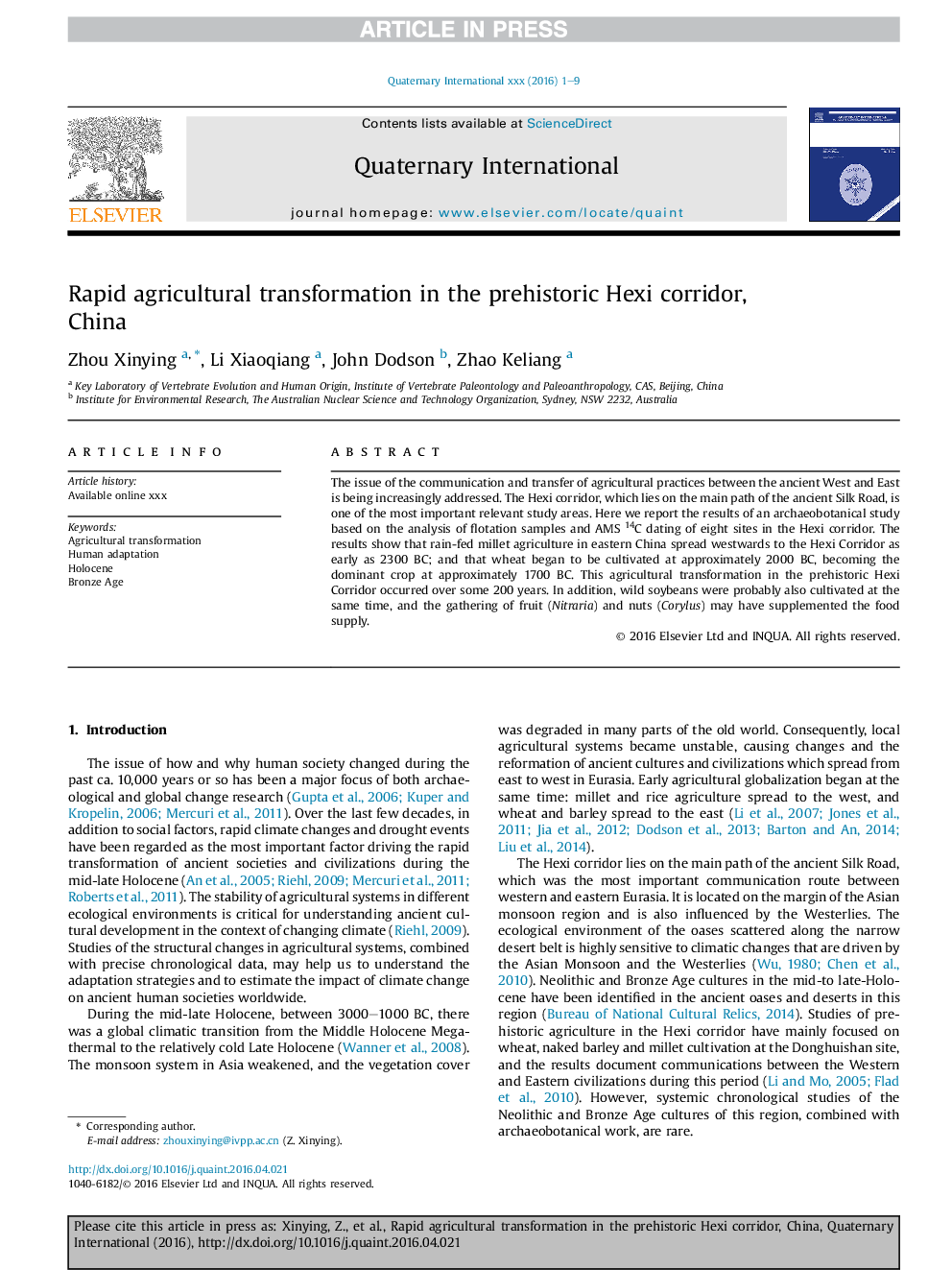| Article ID | Journal | Published Year | Pages | File Type |
|---|---|---|---|---|
| 5114104 | Quaternary International | 2016 | 9 Pages |
Abstract
The issue of the communication and transfer of agricultural practices between the ancient West and East is being increasingly addressed. The Hexi corridor, which lies on the main path of the ancient Silk Road, is one of the most important relevant study areas. Here we report the results of an archaeobotanical study based on the analysis of flotation samples and AMS 14C dating of eight sites in the Hexi corridor. The results show that rain-fed millet agriculture in eastern China spread westwards to the Hexi Corridor as early as 2300 BC; and that wheat began to be cultivated at approximately 2000 BC, becoming the dominant crop at approximately 1700 BC. This agricultural transformation in the prehistoric Hexi Corridor occurred over some 200 years. In addition, wild soybeans were probably also cultivated at the same time, and the gathering of fruit (Nitraria) and nuts (Corylus) may have supplemented the food supply.
Related Topics
Physical Sciences and Engineering
Earth and Planetary Sciences
Geology
Authors
Zhou Xinying, Li Xiaoqiang, John Dodson, Zhao Keliang,
